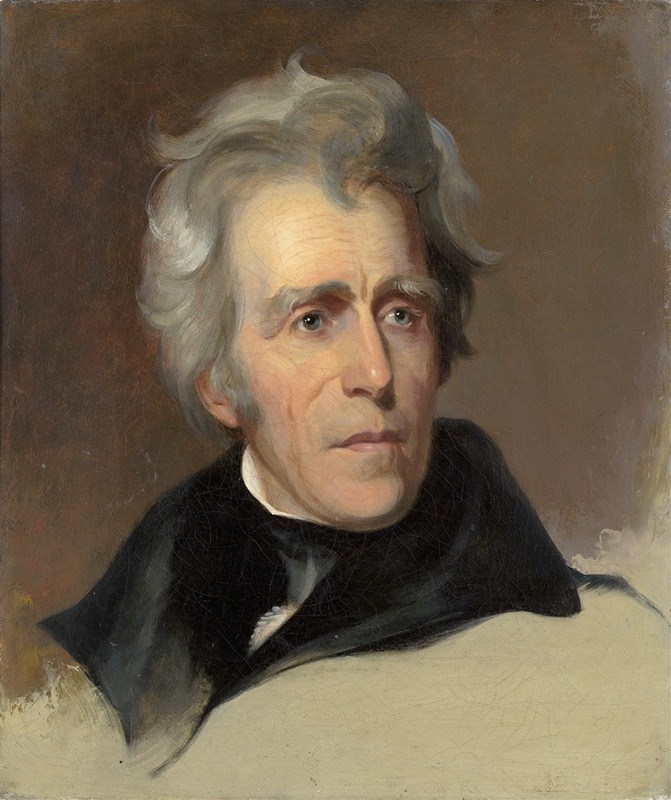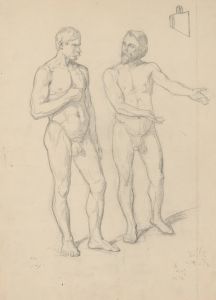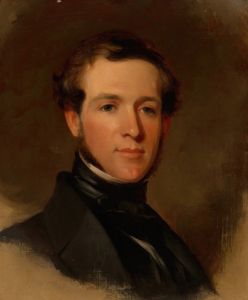
Andrew Jackson
A hand-painted replica of Thomas Sully’s masterpiece Andrew Jackson, meticulously crafted by professional artists to capture the true essence of the original. Each piece is created with museum-quality canvas and rare mineral pigments, carefully painted by experienced artists with delicate brushstrokes and rich, layered colors to perfectly recreate the texture of the original artwork. Unlike machine-printed reproductions, this hand-painted version brings the painting to life, infused with the artist’s emotions and skill in every stroke. Whether for personal collection or home decoration, it instantly elevates the artistic atmosphere of any space.
Thomas Sully's portrait of Andrew Jackson is a significant work in the realm of American art, capturing the likeness of one of the most influential figures in United States history. Painted by Thomas Sully, a renowned portrait artist of the 19th century, this artwork is a testament to both the artist's skill and the historical importance of its subject.
Andrew Jackson, the seventh President of the United States, served from 1829 to 1837. He was a prominent military leader and a key figure in the founding of the Democratic Party. His presidency is often noted for its populist approach and his role in the implementation of policies such as the Indian Removal Act. Jackson's complex legacy includes both his advocacy for the common man and his controversial policies regarding Native American removal.
Thomas Sully, born in 1783 in England, emigrated to the United States with his family in 1792. He became one of the leading portrait painters of his time, known for his ability to capture the character and essence of his subjects. Sully's work was highly sought after, and he painted numerous prominent figures of his era, including members of the American political and social elite.
The portrait of Andrew Jackson by Thomas Sully was completed in 1824, a few years before Jackson assumed the presidency. This timing is significant as it captures Jackson during a period when he was gaining national prominence, particularly after his victory at the Battle of New Orleans during the War of 1812. The painting is an oil on canvas, a medium commonly used by Sully, allowing for rich detail and vibrant color.
In the portrait, Jackson is depicted with a stern yet dignified expression, reflecting his reputation as a strong and decisive leader. Sully's attention to detail is evident in the rendering of Jackson's facial features and attire, which are meticulously painted to convey both his character and status. The background of the painting is relatively simple, ensuring that the focus remains on Jackson himself.
Sully's portrait of Jackson is housed in several collections, with versions and copies existing in different institutions. The original painting is part of the collection at The Hermitage, Jackson's historic home near Nashville, Tennessee, which serves as a museum dedicated to his life and legacy. This location is fitting, as The Hermitage is closely associated with Jackson and provides context for understanding his impact on American history.
The portrait is not only an artistic achievement but also a historical document, offering insight into how Jackson was viewed during his lifetime. It remains an important piece for both art historians and those interested in the history of the United States, illustrating the intersection of art and politics in the early 19th century. Through Sully's skilled hand, the image of Andrew Jackson continues to be a subject of study and admiration, reflecting the enduring legacy of both the artist and his subject.

















